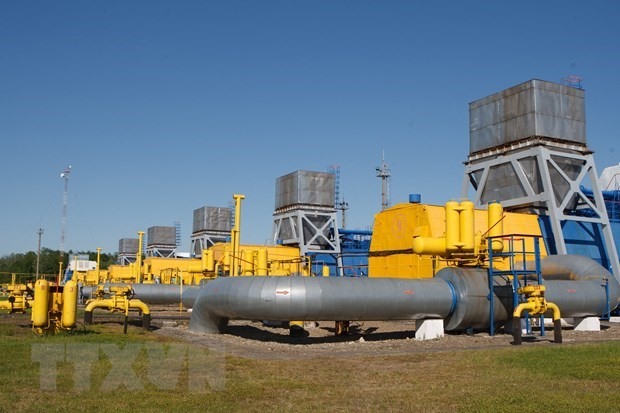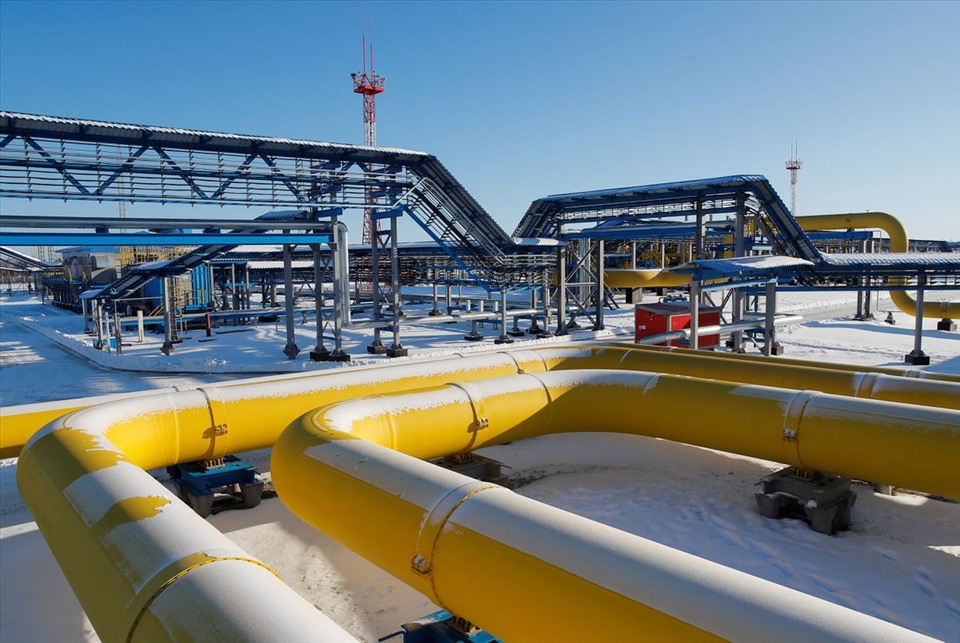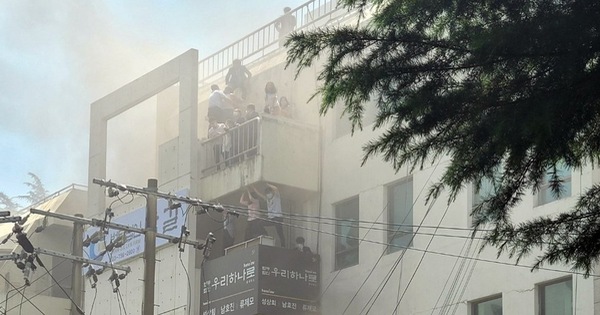Europe bears the consequences when Ukraine blocks Russian gas
Job Ukraine blocks Russian gas from reaching Europe passing through a key transit point has raised concerns about energy shortages on the continent.

The operator of Ukraine’s gas network on May 11, partially stopped shipping Russian gas to Europe via one of the important cross-border stations in the territory of this country.
What happened?
The operator of Ukraine’s gas network, OGTSU Ukraine, announced late on May 10 that it would stop receiving Russian gas into the Sokhranovka gas station starting May 11, as it can no longer control the infrastructure in territory occupied by the Russian army. According to the OGTSU statement, Russian forces interfered in technological processes, endangering the security of the entire gas transportation system of the country. The company said it considers the situation to be a force majeure, and it is unable to provide shipments to Europe for reasons beyond its control.
On May 10, spokesman Sergey Kupriyanov said that Gazprom has not received any confirmation of a force majeure incident or interruption of operations in Sokhranovkav. Kupriyanov added that Ukrainian experts have full access to the station and have not had any complaints about this before.
Impact on European gas supplies
Russian gas supplies to Europe are dwindling. OGTSU Ukraine initially said it would temporarily reroute gas from Sokhranovka to the second and largest transit station, Sudzha, located on territory controlled by Kiev. However, the energy corporation Gazprom Russia later stated that this was technically impossible. Since the Sokhranovka station handles about a third of Russia’s gas flow into Ukraine for further transportation, European buyers will lose this gas due to the station’s closure.

Gazprom said it had delivered 72 million cubic meters of gas to Europe through the Sudzha station on May 11, while a day earlier, the total number of confirmed applications by European consumers amounted to 95.8 million cubic meters. . At its peak, applications from Europe reached 109.6 million cubic meters in early March. This means Europe loses between 25% and 34% of its gas deliveries from Russia.
How does this affect gas prices?
Gas prices in Europe initially rose after Ukraine blocked the pipeline, to over $1,100/1,000 cubic meters early on May 11. Experts say this situation will inevitably lead to an increase in prices, as European consumers suffer a decrease in volume.
For example, data from the company Snam, which ships gas to Italy, shows that Russian gas flows have actually decreased since May 10, while the German regulator says Russian flows through Ukraine have decreased. almost 1/4.
What are the other consequences?
Russia supplies about 40% of Europe’s total natural gas needs. EU depend on cheap Russian gas for heating, cooking and power generation in most of the bloc’s 27 member states. Reduced supply, in the worst case scenario, can lead to grid failures, power outages and shutdowns across industries.
Rising gas prices could also push up prices of other commodities and consumer goods, pushing historically high inflation even higher. Inflation in 9 EU countries has reached more than 10%. European consumers urgently need to find alternatives.
What are EU alternatives to Russian gas?
European buyers can request an increase in gas shipments from Europe’s second-largest supplier, Norway. In 2021, Norway will supply nearly a quarter of gas to the EU and UK. However, Norway’s oil and gas fields are producing at almost 100% capacity, and while the country recently pledged to ramp up production in the summer, this is unlikely to make up for the lack of resources. Russia’s bow is lost.
Europe’s other option is to buy liquefied natural gas (LNG) from the US and the Middle East, but the commodity – and the means of transport – costs much more than Russian gas. In addition, there is a limit to how much LNG suppliers can produce and ship, and experts say global liquefaction capacity is almost used up. In addition, some EU countries do not have a sea, so they cannot receive LNG transported by sea.

Is there any way to fix this situation?
Europe can offer long-term alternatives – perhaps finally granting long-awaited and now blocked certification for gas pipelines Nord Stream 2 Russia, to Europe via the Baltic Sea and has the capacity to supply almost twice as much gas through the Sokhranovka transit station.
In addition, Ukraine can reopen the aforementioned transit station and not lose the money it received from the transportation of Russian gas.
Final, Russia and Ukraine it is possible to reach a peace agreement – however, the outcome depends on the involvement of the US and the EU, which is unlikely at this time.
at Blogtuan.info – Source: laodong.vn – Read the original article here



